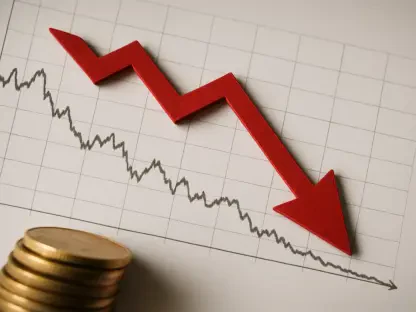In today’s fast-paced financial landscape, the allure of day trading has captured the imagination of many aspiring investors. Social media teems with stories of novice traders making quick fortunes, often leading individuals to prematurely perceive day trading as a straightforward and lucrative endeavor. This perception is enhanced by initial successes, creating a seductive sense of beginner’s luck that occasionally tempts traders to abandon stable careers for the promise of quick profits. However, day trading is a complex profession that requires a profound understanding of market dynamics, discipline, and psychological resilience. As individuals journey toward becoming seasoned day traders, they inevitably traverse four critical phases: beginner’s luck, building a foundation, real money experimentation, and ultimately, professionalism. Each stage presents unique challenges and learning opportunities, forging a trajectory from naive enthusiasm to sophisticated expertise.
Beginner’s Luck and Early Temptations
Initial encounters with day trading often entrench traders in an adrenaline-fueled quest for rapid results, buoyed by success stories glorified across social media. The early days can be undeniably thrilling, with stories of substantial gains leading to potentially hasty decisions. This phase encapsulates the seductive notion that success hinges merely on intuition and quick reflexes, overshadowing the necessity for sustained education and practice. Some traders experience fortunate wins in their first few attempts, creating a false perception of invulnerability against the typical learning curve. This perceived invincibility often triggers risky behavior, including quitting secure jobs or investing substantial capital without sufficient knowledge. As beginner’s luck fades, hidden pitfalls become apparent, and security transforms into vulnerability. Without proper guidance, individuals risk retreating from the trading landscape, driven by a succession of losses and disappointments.
Amid this illusion of effortless profits, discouragement often lurks beneath the surface, stemming from inevitable market fluctuations and unexpected losses. Transitioning from the early thrill of trading to a phase necessitating dedication and skill development is challenging. Yet this phase offers a critical lesson—it underscores that triumph in day trading demands more than fleeting successes; it requires embracing discipline and mastering technical prowess. Those who can discern this reality begin to appreciate that their journey is less a sprint for immediate gains and more an expedition requiring time and patience. Mistakes made here often serve as invaluable lessons, highlighting the importance of a more measured approach and prudent decision-making. The realization that day trading requires strategic planning, commitment to learning, and risk awareness sets the stage for the ensuing phases, where dreams of quick riches transform into disciplined perseverance.
Crafting a Robust Foundation
Transitioning from beginner’s luck to a sustained and methodical approach signals progress toward professional day trading. Recognizing trading as a legitimate profession entails understanding market mechanisms and continuously refining analytical capabilities. This phase is critical for developing a solid foundation by emphasizing risk-free simulation exercises, fostering skills essential for navigating the complexities of real-market scenarios. Acknowledging the steep learning curve, traders adopt simulators to practice without the fear of financial loss, honing their interpretative abilities concerning candlestick patterns and understanding emotional impacts. Iterative cycles of gains and losses define this stage, manifesting in modest yet consistent profits, which mark crucial milestones before advancing further.
Traders who remain committed during this arduous phase often confront the vast discrepancies between perception and reality, thereby evaluating their dedication toward more advanced trading techniques. Motivation during this period is derived not from substantial gains, but from the promise of steady skill acquisition and recognizable progress. While refining technical abilities and emotional resilience, traders frequently confront the stark realization that even minute errors can yield significant financial implications. The pivotal aspect of this phase is its transformative impact, resulting in profound insights into personalized strategies tailored to individual comfort levels. As traders emerge from it, their dedication is rigorously tested; some find the effort overwhelming relative to previous expectations and subsequently retreat from their trading aspirations.
Transition to Real Money Trading
The shift to real money trading marks a pivotal juncture where theory meets tangible practice, providing insights into real-time market fluctuations and challenges. Moving beyond simulation into authentic market dynamics exposes traders to the humbling realities of unpredictable variables and high-stakes pressures. Although simulations afford confidence in identifying patterns and executing trades, real money phases necessitate unlearning previously ingrained assumptions and adapting to actual market behavior. The transition reveals the harsh truths surrounding losses and mistakes—a rite of passage for any aspiring professional trader. Surviving this transitional period involves not merely maintaining profitability but establishing a resilient mindset capable of absorbing and transforming setbacks into growth opportunities.
This stage functions as the crucible for cultivating a trader’s distinctive style, characterized by adaptability and strategic innovation. It forges an individual capable of weathering the vicissitudes of market tides, drawing upon accumulated knowledge and experience to safeguard profits amidst relentless trials. This phase’s growth is anchored not in sheer profit maximization but in acquiring nuanced insights capable of guiding future endeavors. Those who persevere during this stage garner not only monetary rewards but an intrinsic understanding of risk management, real-time assessments, and price fluctuations. By leveraging past learning and tactically adapting to market adversities, aspirants transform theoretical expertise into practical momentum and sustainable proficiency.
Achieving Professional Mastery
Day trading has captured the interest of many budding investors in the rapidly evolving financial world. Social media is brimming with stories of beginner traders hitting the jackpot, which can mislead people into thinking day trading is a straightforward and lucrative venture. These perceptions are compounded by initial successes, creating a misleading sense of beginner’s luck that sometimes entices individuals to leave stable jobs for the allure of fast profits. Yet, day trading is not a mere pastime but a sophisticated skill that demands a deep understanding of market dynamics, strong discipline, and psychological stamina. As aspiring day traders embark on this journey, they progress through four critical stages: experiencing beginner’s luck, establishing a strong foundation, experimenting with real money, and eventually achieving professionalism. Each phase presents its own set of challenges and learning opportunities, shaping a path from naïve enthusiasm to advanced expertise in the trading world.









